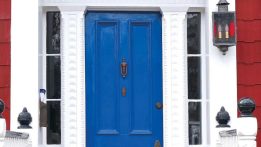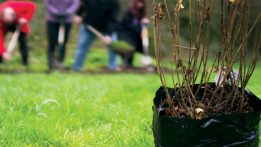When Floridians hear the term “wildfire,” they often picture massive flames erupting in mountainous western forests with smoke looming above homes as families are forced to evacuate en masse. What many may not realize though is that fire continues to be a factor in both rural and suburban areas in Florida. Just last year, the Florida Forest Service battled 2,441 wildfires and protected 394 homes, businesses, and other structures from the threat of wildfire. Some homeowners may wonder if they are in danger of wildfire and what they can do to increase safety.
Am I At Risk?
While the majority of Florida’s residents live in low wildfire risk areas, residents who live near undeveloped or wooded areas could be at risk in the event of a wildfire. To determine your wildfire risk, take stock of the area directly around your home and neighborhood, observing the type, size, and density of the trees and plants in your area. Some factors that may indicate heightened wildfire risk include:
- A thick bed of pine needles and lots of pine trees.
- Large clusters of palmettos, shrubs or other vegetation more than three feet tall.
- Vines or palm trees directly beneath taller pines.
- Adjacent undeveloped property with excessive buildup of dry or flammable plant material.
Residents can also visit the online Southern Wildfire Risk Assessment Portal (SouthWRAP), an interactive mapping tool that allows users to pinpoint a specific location and identify wildfire threats based on landscape characteristics, historical fire occurrence, weather conditions, and terrain. Users can access SouthWRAP at www.SouthernWildfireRisk.com.
How Can I Increase My Wildfire Safety?
Just as Florida coastal residents prepare for hurricanes, all Florida residents should take steps to increase wildfire safety before wildfire activity increases in the spring. A home’s chances of survival during a wildfire are improved if the surrounding yard is clean and trim with evenly spaced fire-resistant landscaping. Further increase your home’s wildfire resistance by implementing some of the suggestions below:
- Regularly clean all pine needles and leaves from the roof, eaves, and gutters.
- Remove debris from underneath home and deck.
- Mow tall grasses and rake leaves and pine straw away from your home.
- Regularly prune shrubbery to remove excess growth and dead branches.
- Prune tree limbs 6-10 feet from the ground and remove climbing vines
- Regularly water lawn plants according to local water use guidelines.
What Types of Plants Are Firewise?
Although any plant will burn with sufficient exposure to heat, using trees and plants that exhibit fire resistant qualities is ideal for fire resistant or Firewise landscaping directly around your home. Move fire-prone plants that have low moisture content or waxy resinous coating 30 feet away from the home. According to the University of Florida Institute of Food and Agricultural Sciences, some plants with unfavorable fire resistance include Italian cypress, palms, juniper, fountain grass, hollies and saw palmetto. Some examples of fire resistant plants include:
Trees
- Bottlebrush
- Redbud
- Citrus
- Live oak
- Maple
- Magnolia
Shrubs
- Century plant/Agave
- Aloe
- Azalea
- Bird of paradise
- Viburnum
Other Fire Resistant Plants
- Lily of the Nile
- Carpet Bugle
- Daylily
- Honeysuckle
- Star jasmine
- Periwinkle
The Florida Forest Service manages more than 1 million acres of public forest land while protecting 26 million acres of homes, forestland, and natural resources from the devastating effects of wildfire. For more information about Firewise landscaping and other ways you can increase your wildfire safety, visit www.FloridaForestService.com. ![]()
By Chelsea Ealum,
Florida Forest Service






